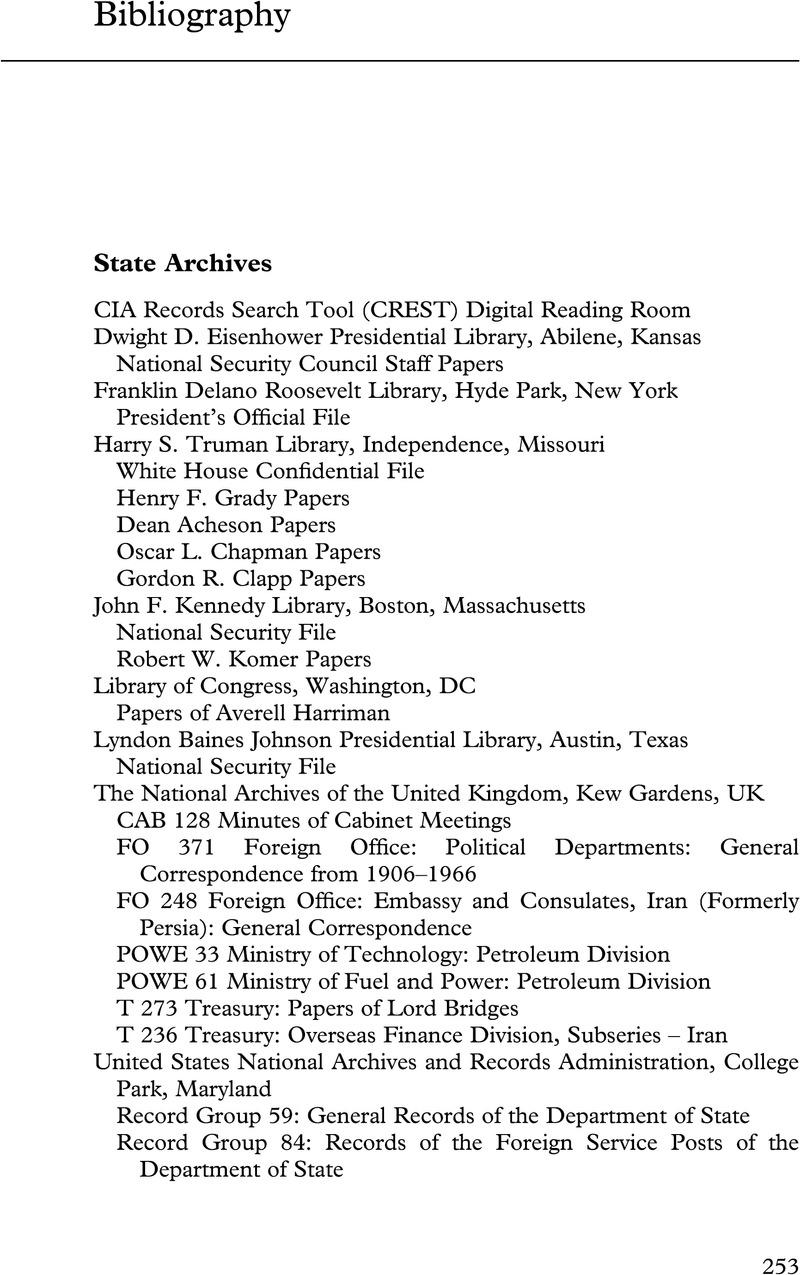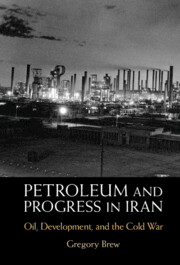Bibliography
Published online by Cambridge University Press: 15 December 2022
Summary

- Type
- Chapter
- Information
- Petroleum and Progress in IranOil, Development, and the Cold War, pp. 253 - 269Publisher: Cambridge University PressPrint publication year: 2022



